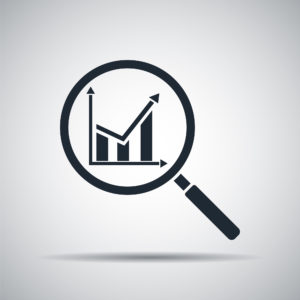A new report identifies how high-level institutional leaders successfully implement data best practices.
As data continues to play an increasingly important role in college and university operations as institutions leverage it to form policy and dictate practices, a new report has identified four best practices specifically suited for institution and system leaders.
RSVP now to watch dynamic interviews from some of higher ed’s most innovative thought leaders, live from ASU-GSV’s Innovation Summit April 18-20. Read more, and RSVP, here: http://shindig.com/event/asugsvsummit
The report from the Institute for Higher Education Policy (IHEP)–supported by the Bill & Melinda Gates Foundation–interviews higher-ed leaders to explore how those leaders are using data to inform both their short- and long-term decision making when it comes to policy and student success.
The report offers four recommendations and best practices, along with examples from universities, for institutional leaders who wish to use data in more meaningful ways across their campuses:
1. Establish a culture of data use for institutional improvement.
While every leader said data is valuable and asserted that they use it on a daily basis for decision making, the degree of sophistication varies. Some connect decisions, action plans and initiatives to data collected on campus, while others labeled themselves as “data-minded” but had not yet developed detailed or effective strategies to make its use a priority in effecting institutional change.
California State University, Fullerton established a digital data warehouse that pulls student information from various data systems across campus. University advisors use the dashboard to identify students who might not graduate on time and who might benefit from additional support.
(Next page: Data use tips 2-4)
2. Distribute data responsibilities across campus offices.
Many leaders rely heavily on institutional researchers and other campus administrators to collect and analyze data, according to the report. Institutional research capacity varied across the participating institutions, with some having a single full-time equivalent employee dedicated to institutional reseach, while others had staff or system-level offices with larger institutional research groups.
The report reveals that institutional research plays an important, but not imperative, part in how senior higher-ed leaders are able to use data to answer institutional improvement questions. The collaborative relationship between institutional research staff and leadership is of particular importance.
For instance, a small, private liberal arts college’s instutional research office has only two full-time equivalent employees, but the institutional research office collaborates with others on campus in order to enable the college to undertake ambitious data-driven projects. This is bolstered by the college’s culture of using data for every decision.
3. Reach beyond campus boundaries to find and use data.
Institutional leaders said they see opportunities to leverage federal and state data, but they tend to more often focus on institutional data.
Most leaders responding to the report said they do use federal data to some extent, usually for benchmarking, but said they wish they could access additional data coming from federal or state sources to help them better understand students’ academic preparation, learning outcomes, continuing education, employment, and earnings.
4. Participate in data policy conversations at the national level.
Most institutional leaders support the design of a federal student-level data system, but many of them are not engaged in federal policy conversations.
Participating leaders who were aware of the 2008 federal ban on creating a student-level data system and related proposals to overturn it said the benefits of such a data system would merit a review of the political barriers preventing it.
“This brief lifts up the important voices of chancellors, presidents, provosts, and other leaders who are working on the ground to promote student success-focused, action-oriented data use,” said Dr. Michelle Asha Cooper, president of IHEP, in a statement. “Institutions that are still developing a data-driven culture can learn from senior institutional leaders who are already using data to inform their daily and long-term decision making processes.”
The report is the culmination of interviews with the Senior Institutional Leadership Council (SILC), a group of university presidents and senior level administrators from across the nation. IHEP and New America formed SILC in the fall of 2015 in order to learn more about how successful institutions are leveraging data to improve student outcomes.
For more information, read the full report, “Leading With Data: How Senior Institution and System Leaders Use Postsecondary Data to Promote Student Success.”
- An overwhelming majority of organizations paid ransomware last year - May 9, 2024
- 5 trends impacting higher ed’s path in 2024 - May 8, 2024
- Are AI skills more important than degrees? - May 2, 2024

